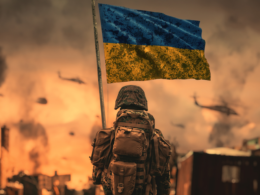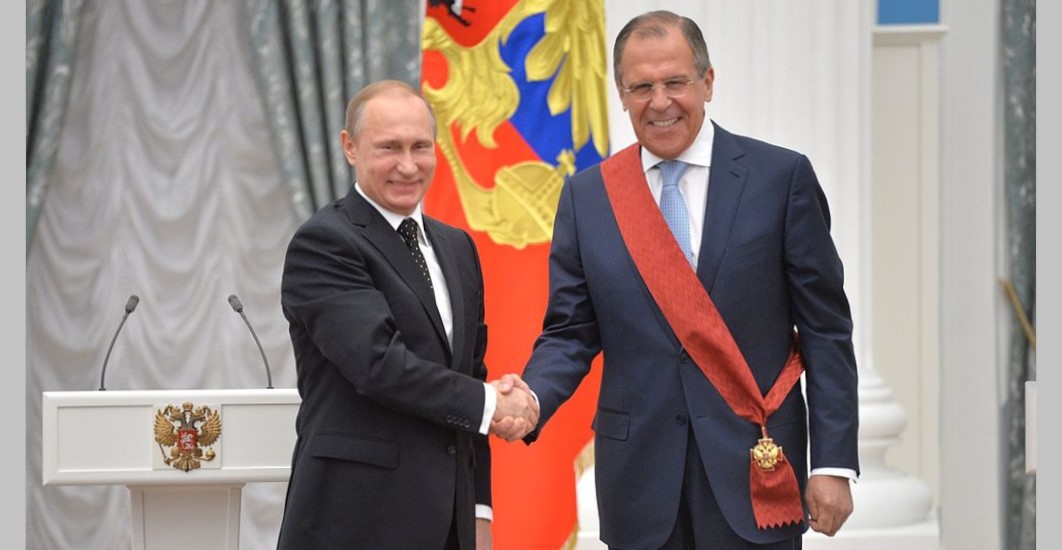24 February 2022 was only yet another phase, the war started in 2014
Tomorrow, political leaders and media across the West will claim that the war started six months ago, on 24 February 2022. It did not.
On Saturday, it was exactly 8,5 years since the war started on 20 February 2014. When the full-scale invasion started, more than 15,000 had already been killed, 32-34,000 wounded, and 1,5 million Ukrainians were internally displaced.
Russia already controlled approximately 19,6% (145 000 km2) of Ukrainian territory and areas under its jurisdiction. War on the European continent has been ongoing for nearly a decade already.
On 24 February, the war only entered yet another phase. In September 2020 I argued that "the first out of five phases (shaping) started decade(s) ago. It involved dismantling the Ukrainian Security and Defense Sector, shaping the information domain, preparing the economic and political space, and more. The second (and active) phase of the Hybrid War started on 20 February 2014. The last three phases (crisis, resolution, and restoration of peaceOn 24 February, the war only entered yet another phase
) lay still in the future."
At the time, I stressed that the ongoing peace initiatives were trying to fix a crisis that was perceived to have happened, while the "game-changing" crisis had yet not taken place.
The third phase of the hybrid war against Ukraine and the West started on 24 February 2022.
Unfortunately, the USA, NATO, and the EU were in denial until only weeks before Putin ordered the full-scale assault on Ukraine. For eight years, they failed to acknowledge the devastating consequences a full-scale war would have for both Ukraine and Europe.USA, NATO, and the EU were in denial until only weeks before Putin ordered the full-scale assault on Ukraine
In my very last report as a Norwegian Defence Attaché to Ukraine, I argued that "if EU/NATO find the consequences 'acceptable' and in line with the national interest of the individual nations, there is no need to adapt their present strategy. If unacceptable, the West needs to adjust its strategy to the realities of the Hybrid War."
They did not change their strategy, however. Today, as Ukraine is paying the most horrendous price of all, the USA and Europe are also facing the consequences of their failure of inaction. International security and stability have been undermined. The Euro-Atlantic security and stability are threatened, and our future prosperity is at risk. Russia has intentionally exacerbated a food and energy crisis, affecting billions of people around the world.
The world is facing a "tsunami of ripple effects" (e.g. costs of living, food and energy insecurity, famine, recession, inflation, and more) and the increasing risk of global unrest, riots, and collapse of the governments.
This has happened not for lack of information but despite it. It is a result of wishful thinking and a desire for "peace at all costs."
For Russia, it is an indication that its nuclear "fait accompli" strategy is effective and that it has succeeded in deterring the biggest military alliance in history.
The West's failures
Russia did not start a war in 2014 just for the "fun of it." It was always intended to be victorious. It simply employed a strategy we found hard to detect, deter, and respond to effectively. We still do and lack an effective counter-strategy to meet the hybrid threats.
The West failed to respond resolutely to more than 15 years of its violations of international law. This includes not only the Russian attack on Georgia and Ukraine, and its brazen Hybrid War against the West but also its multiple transgressions since the international community first introduced sanctions over its illegal occupation and annexation of Crimea in 2014.
Western weapons lost in Ukraine? Physically impossible since 2019
As a result, we failed to react and, consequently, failed to deter the full-scale invasion that followed.
Unfortunately, we continue to fail. 8,5 years after the war started, 20 out of 30 countries have yet to meet the NATO target of spending 2% of GDP on the defense budget. Weapon and ammunition stocks are running low. Several countries are taking strategic risks supporting Ukraine at the cost of their own deterrence.
The defense industries are still years away from being able to ramp up their production. The flow of new international support for Ukraine is drying up, and more countries are becoming reluctant to supply weapons and ammunition.
Ukraine now has neither weapons nor security: Zelenskyy demands Budapest Memorandum consultations
The NATO countries are not providing Ukraine with the tools it needs to defeat and evict the Russian forces, even though Euro-Atlantic security and stability are at stake. NATO has decided to limit its engagement to the political sphere, providing Ukraine with nonlethal support only.
The war will continue to evolve in the time to come unless NATO, the EU, and the USA finally decide to join Ukraine in its efforts to defend Euro-Atlantic security.
I have long argued (lastly, 2 days ago) that Western humanitarian intervention in Ukraine is inevitable. It is bound to happen despite the US and NATO's continued declarations that they will not deploy military forces to help defend Ukraine.
The West is running out of weapons it can supply Ukraine which it can use with no or limited training. The options left for us are either to see Ukraine fail or to provide it with both the weapons and the personnel needed to operate them efficiently
. The former is, fortunately, no option.
Logisitics: a nightmare not only for Russia
The reality is that the West is fast reaching a long-predicted milestone. In the same manner, as logistics forced Russia to adjust its initial operational objectives for the invasion, logistics are about to force the Alliance to change its strategy.
NATO will need to start acting according to NATO's strategic concept 1999-2022: Stop ongoing conflicts threatening the security of its member states.
It's time to end the war. It's high time we provide Ukraine with the tools it needs to defeat Russia. It is not, at least, time for us to step in and fight alongside our Ukrainian friends and partners to both defend Ukrainian territorial integrity and sovereignty, as well as protect Euro-Atlantic security and stability.
The war didn't start on 24 February 2022. It only marked the moment we finally started to help Ukraine build deterrence. Eight years too late to stop the Russian invasion.
So let us provide the support that is needed before it's too late. Close the sky. Break the embargo. Evict the Russians. Liberate all of Ukraine. Contain Russia.
Let us be inspired and become brave as Ukrainians.
Read More:
- Western weapons lost in Ukraine? Physically impossible since 2019
- Ukraine now has neither weapons nor security: Zelenskyy demands Budapest Memorandum consultations
- 300 MLRS is a “good number” for Ukraine: Ukrainian military expert on achieving weapons parity with Russia
- Many countries ask to keep the weapons they give Ukraine a secret – Ukraine’s RNBO chief Danilov
- Not enough weapons, not enough Russian sanctions: opinion poll
- What weapons for Ukraine would help it win the war against Russia





